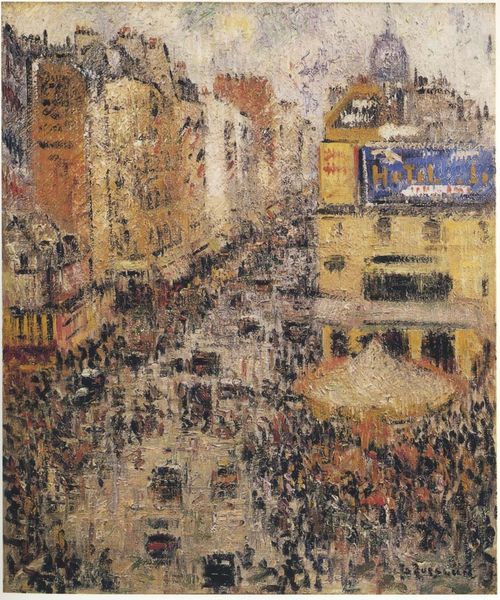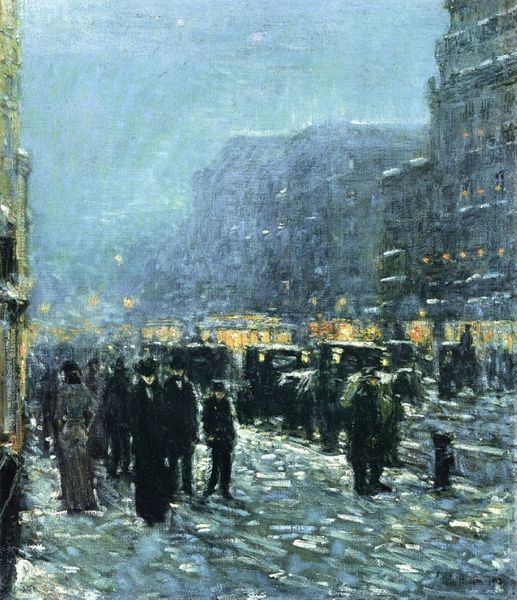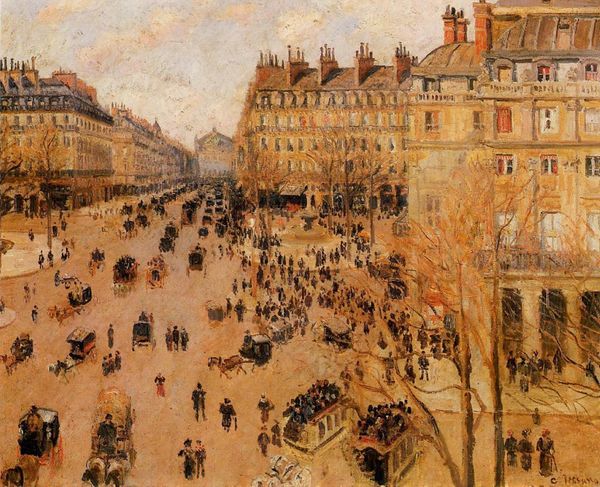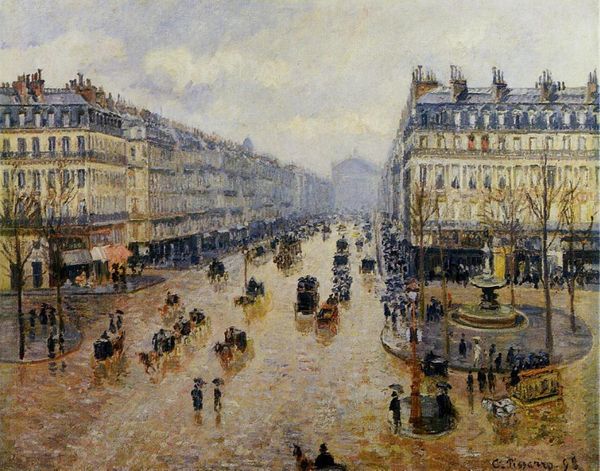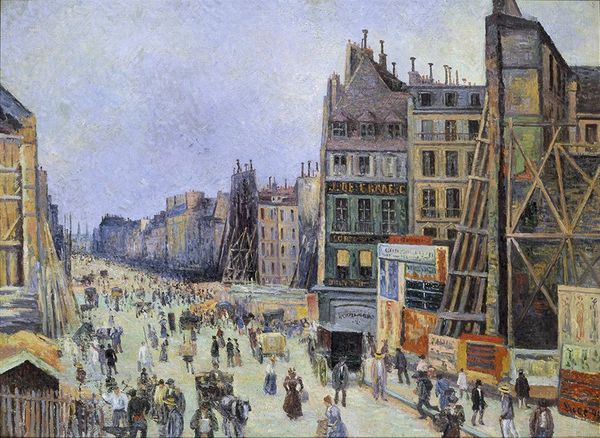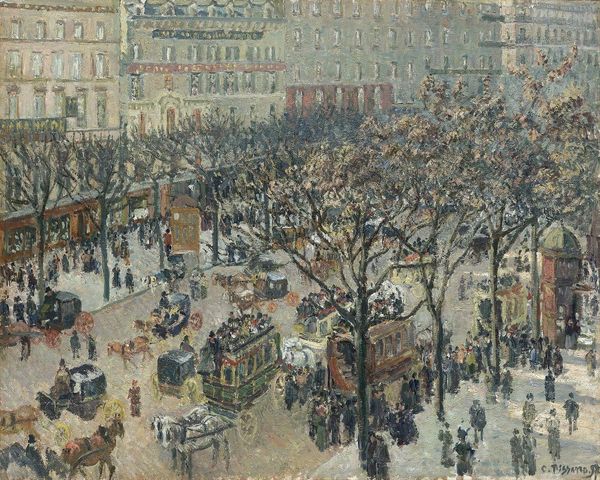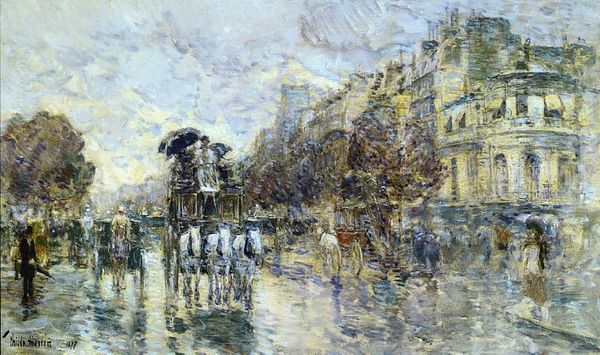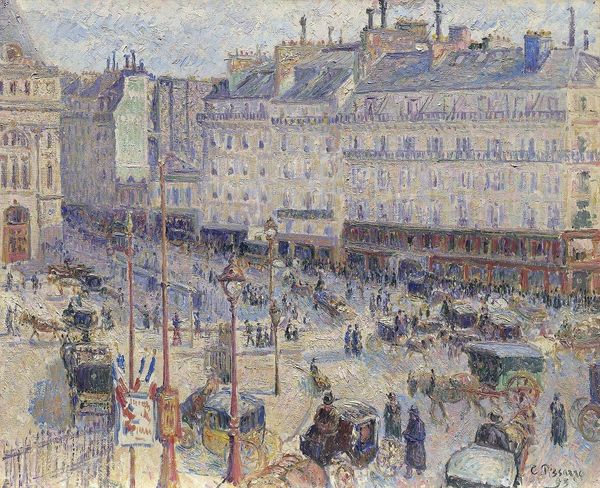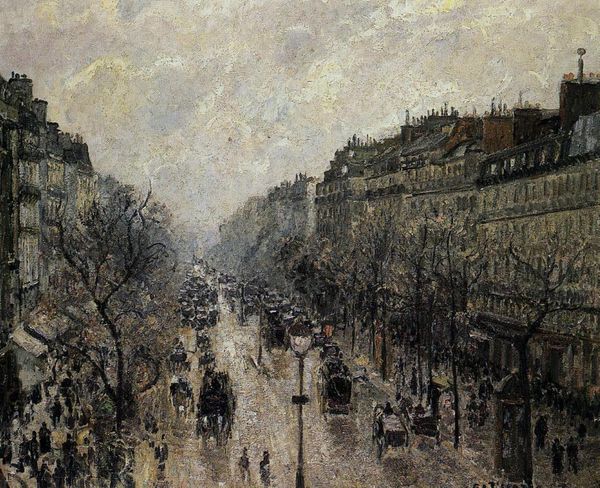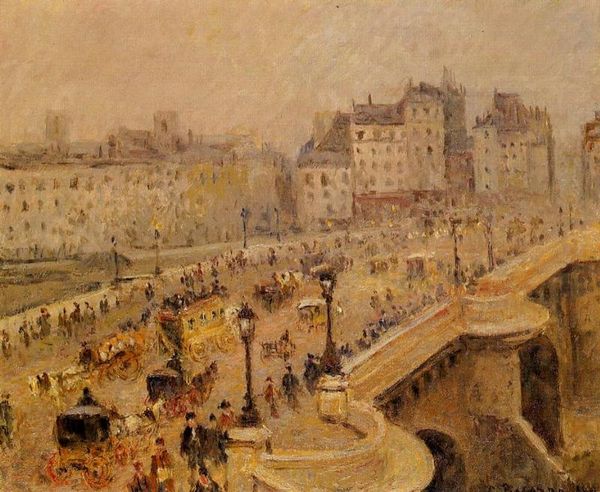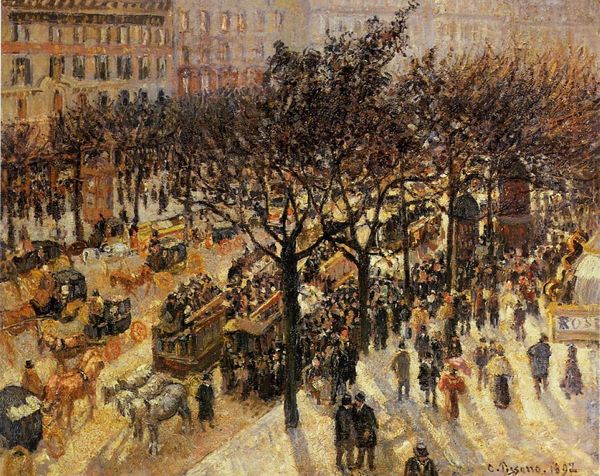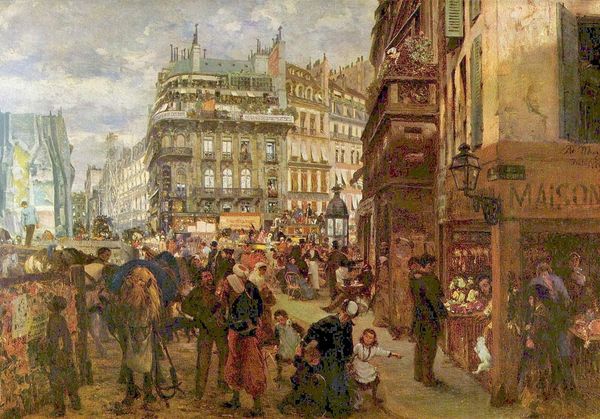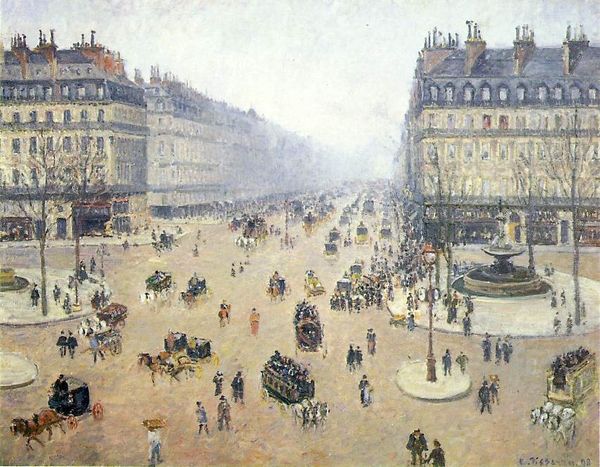
Copyright: Public domain
Editor: We’re looking at "Cligancourt Street in Paris" painted by Gustave Loiseau in 1924, using oil paints. The canvas teems with figures, though their details are muted. It’s as if looking at a memory of a busy Parisian day. What story does this piece tell you? Curator: This painting provides a glimpse into the modernization of Paris during the early 20th century. Loiseau, as an artist associated with post-Impressionism, was particularly interested in depicting everyday life and urban scenes, following in the footsteps of the earlier Impressionists. But beyond just recording a scene, I think this painting also raises questions about whose stories are deemed important. Who gets to represent the city, and for whom? Editor: That's a really interesting point! It makes me wonder about the average Parisian at this time, just going about their day, becoming immortalized in a painting viewed by thousands, decades later. Curator: Exactly! And how this type of "genre painting", depicting ordinary life, gained prominence through institutions like salons and galleries. These venues gave visibility to particular kinds of scenes and thereby shaped public perception and ultimately, historical narratives. Think about whose Paris we *don't* see represented, or the way those that we do are depicted. Editor: It makes me appreciate how a seemingly simple street scene is a snapshot of a much larger cultural and social narrative. I will think of the socio-political aspects next time I see Impressionism. Curator: Precisely! By considering the art world dynamics and societal forces, we can unpack the multiple layers of meaning behind an image.
Comments
No comments
Be the first to comment and join the conversation on the ultimate creative platform.
